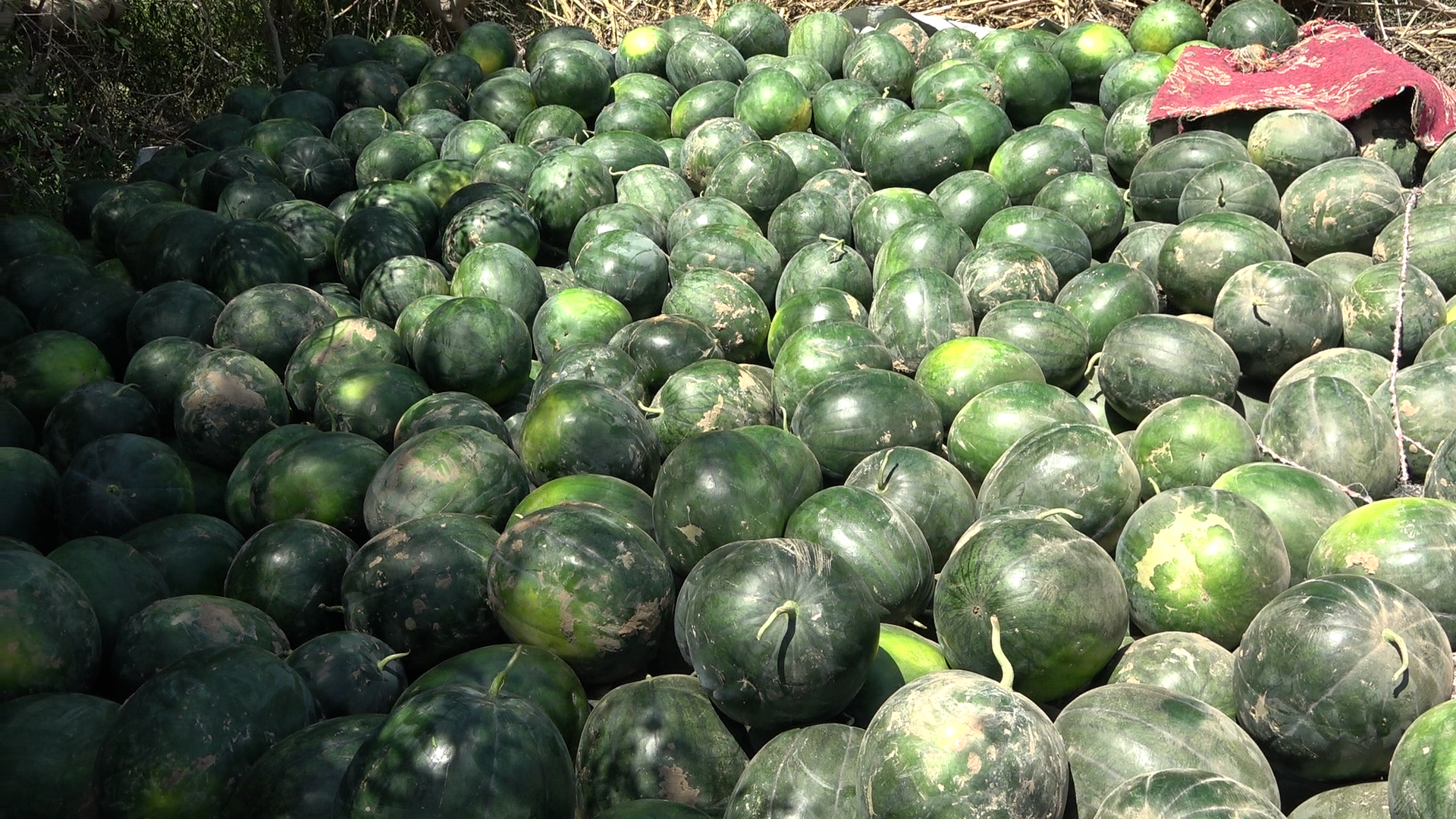"Returning to agriculture and land helped us a lot in continuing to live and earn a decent living after our salaries were cut off." With these words, farmer Shukri Al-Saraihi started talking to Al-Jazeera Net after being asked about his agricultural crop of watermelon for this year and the reason for his direction to work in agricultural land.
Al-Saraihi attributes the reason for his return in the last three years to work on his father's agricultural land, which is 120 km north of Lahj, south of Yemen - after a 15-year break from it - to advice he received from his comrades after his military salary was cut off, and to escape the unemployment rate that afflicted millions of Yemenis because of the war. .
The governorate of "Lahj" in southern Yemen is one of the most important agricultural areas, as the area of arable land in the governorate is estimated at about 26,390 hectares, while the number of farmers in it is estimated at 55,570 farmers, according to a census issued by the Ministry of Agriculture for the year 2018.
However, different professional sectors explored the agricultural sector during the post-war years, due to the loss of jobs for a large sector of Yemenis and the livelihood provided by agricultural lands.
Ahmed Terem, Director of Planning at the Agriculture Office in Lahj, said in his interview with Al-Jazeera Net that agriculture in Lahj has become open to all, because there are no central plans for the Agriculture Office in light of the current conditions in Yemen, at a time when international organizations are interfering with agricultural production in both parts of the plant and animal, which are development projects. To support the agricultural sector.
Yemen's production of cereal crops such as wheat, corn and barley has declined due to the ongoing war (Al-Jazeera)
Decline in production and space
A report issued by the Yemeni Ministry of Agriculture indicates a decline in Yemen's production of cereal crops such as wheat, corn and barley, as a result of the ongoing war since March 2015, to between 300 and 500 thousand tons compared to the year 2014, which was estimated at 700 thousand tons.
The area planted with these crops decreased to 505 thousand hectares from 727 thousand hectares during the same year.
The agricultural sector contributes to 25% of food consumption in Yemen and about 20% of the GDP, and it employs 40.9% of the total workforce, according to official data.
The security factor
In an interview with Al-Jazeera Net, economic expert Ayoub Al-Qadri attributes this decline to several factors, most notably the security factor, the occurrence of large agricultural areas within the line of fire and military confrontations, and the continued existence of mines in many agricultural areas as a permanent threat to farmers' lives, in addition to the rise of oil derivatives and the collapse of the currency And that exacerbated the suffering, as the prices of seeds, production requirements, and agricultural medicines witnessed a sharp rise, which impeded the aspirations of farmers.
Hamdi Ghanem - a farmer of the onion crop - says that agricultural work has seasons sometimes that are profitable and sometimes lost, indicating that in the seasons when the crop is small, it is sold in the local market, and when it is abundant, he exports it to Saudi Arabia.
Ghanem explained to Al-Jazeera Net that this year's onion crop was not what he hoped for due to the high costs of oil derivatives, seeds and pesticides, workers' wages and high trucking wages to Saudi Arabia, while his deficit this year was estimated at the equivalent of $ 13,000.
The high prices of oil derivatives and the collapse of the national currency exacerbated the suffering of farmers (Al-Jazeera)
Demand for agriculture
Agricultural lands in Yemen witnessed a remarkable demand, and while some farmers deliberately sold their crops, others tended to provide self-sufficiency in these crops in light of the sharp rise in prices and the disruption of salaries.
Muhammad Saif - a teacher in his sixties - says that the irregularity of his salary, which equals $ 100 and the high cost of living, made him think of planting many agricultural crops to achieve self-sufficiency for his family from growing tomatoes, bananas and various legumes on his land, as it saved him the trouble of buying them in light of the salary cut. .
Saif explained that cultivating his land helped him improve his income and provide assistance to many of his neighbors who suffer from extreme poverty due to the loss of job opportunities left by the war.
Cereals are in the lead
The 2018 agricultural census estimated the crop area (farm) in Yemen at one million 64 thousand and 812 hectares, with irrigation sources dependent on rain by 48%, then wells by 32%.
The rest of the sources are distributed between dams, dikes, torrents and torrents, while that census monitored the number of agricultural holders around one million and 191 thousand and 981.
Grains occupy the largest area of agriculture in Yemen at 47%, followed by qat tree 16%, fodder 12%, fruits 8%, cash crops (coffee, cotton, sesame ...) 7%, vegetables 6%, and legumes 4% .

